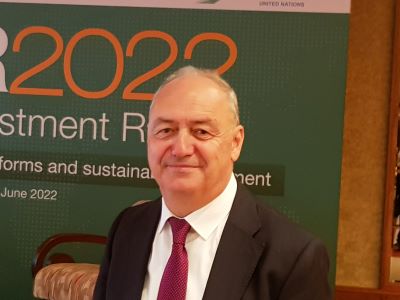Manama: Mahmood Rafique, Editor: The proposed introduction of a minimum tax of 15 to 20 per cent on the foreign profits of the largest multinational enterprises (MNEs) has major implications for international investment and investment policy, according to the UNCTAD World Investment Report 2022 published on Thursday.
The report entitled “International tax reforms and sustainable investment” provides a guide for policymakers to navigate the complex new tax rules and to adjust their investment strategies.
The proposed reforms, backed by the US and G-20 nations will take into effect by end of the 2023 or 2024, aim to discourage multinationals from shifting profits to low-tax countries.
“While the tax reforms are going to increase revenue collection for developing countries, from an investment attraction perspective they entail both opportunities and challenges,” UNCTAD Secretary-General Rebeca Grynspan, said.
“Developing countries face constraints in their responses to the reforms, because of a lack of technical capacity to deal with the complexity of the tax changes, and because of investment treaty commitments that could hinder effective fiscal policy action. The international community has the obligation to help.”
Tax rates on the foreign profits of multinationals will increase. Foreign affiliates that pay tax rates below the minimum on profits reported in host countries will be subject to a top-up. Also, multinationals will reduce profit shifting and pay host-country rates on a larger profit base.
The estimated rise in the effective tax rates faced by multinationals is conservatively estimated at 2 percentage points. This corresponds to an increase in tax revenues paid by multinationals to host countries of about 15% – closer to 20% for large firms that are directly affected by the reforms.
Both developed economies and developing economies are expected to benefit substantially from increased revenue collection. Offshore financial centres stand to lose a substantial part of revenues collected from foreign affiliates.
For smaller developing countries – which generally have lower rates – the application of the top-up tax could make a major difference in revenue collection.
However, the flipside of increased tax revenues is the potential downward pressure on the volume of investment that the increase in tax on foreign direct investment activities will exert. UNCTAD estimates that cross-border investment in productive assets could decline by 2%.
The planned reforms will have major implications for national investment policymakers and investment promotion institutions, and for their standard toolkits. Fiscal incentives are widely used for investment promotion, including as part of the value proposition of most special economic zones.
International investment policymakers and negotiators of international investment agreements (IIAs) need to consider the potential constraints that IIA commitments may place on the implementation of key provisions of the reforms.
If (often developing) host countries are prevented by IIAs provisions from applying top-up taxes or removing incentives, the tax increase to the minimum will accrue to (mostly developed) home countries. Host countries would lose out on tax revenues without providing any benefit to investors.
“The tax revenue implications for developing countries of constraints posed by international investment agreements are a major cause for concern,” the report notes, adding that the international community, in parallel with or as part of the negotiations of the tax reforms, should alleviate the constraints that are placing developing countries at a disadvantage.
“We need to vastly scale up technical assistance to support implementation of the reforms, and we need a multilateral solution to remove implementation constraints posed by IIAs. As a stop-gap measure, we need a mechanism to return top-up revenues raised by developed home countries that should have accrued to developing host countries,” the report says.
Meanwhile, the report shows that global foreign direct investment recovered to pre-pandemic levels in 2021 but uncertainty looms in 2022.



